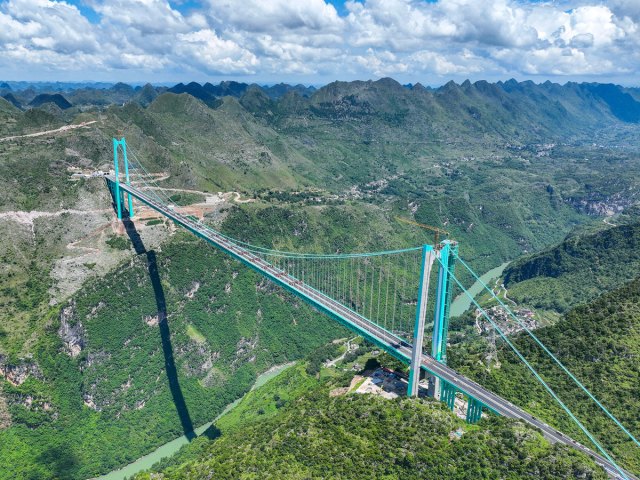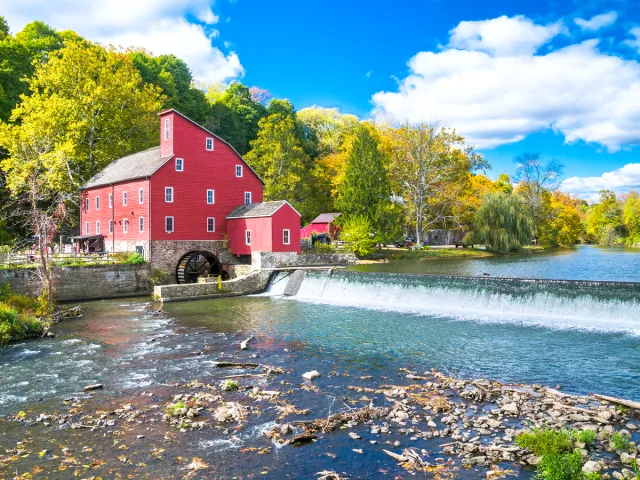Cobblestone streets, old fortress walls, port views, public squares — while these could easily be used to describe a trip to Spain or Belgium, they also apply to Québec City. The beautiful eastern Canadian city is often overlooked in the shadow of metropolitan neighbors like Montreal or Toronto, but as the heart of French-speaking Canada, it offers visitors a unique blend of Old World charm and modern energy. Not up for a flight to Europe? Learn more about Québec City’s rich past and current attractions that make it a must-visit (and much closer) destination to add to your travel list.
New France, New Beginnings
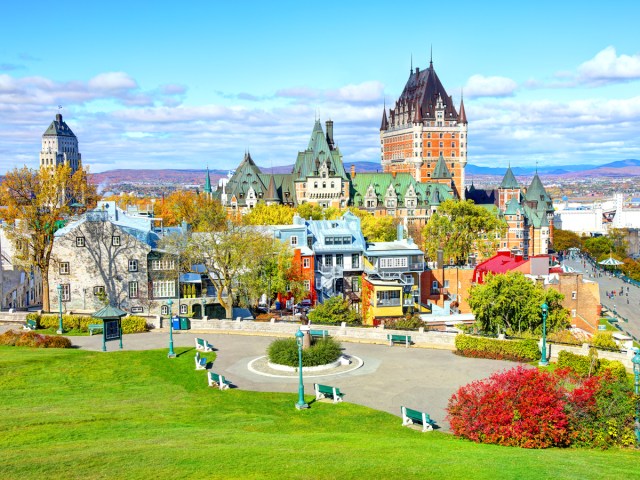
In 1608, French explorer Samuel de Champlain founded Québec City as a key settlement in the New France colony in North America. Its prime location on the banks of the St. Lawrence River meant the settlement quickly became a hub for the fur trade and an important point of defense for the French. It wasn’t the first time the French had tried to claim the area — Jacques Cartier first arrived in 1535 but abandoned his settlement after a particularly harsh winter.
When Cartier landed, he encountered the Iroquoian village of Stadacona, where around 1,000 Indigenous inhabitants fished, hunted, and cultivated corn. By the time de Champlain arrived in 1608, the Stadaconans had vanished and been replaced by nomadic Algonquians. The city’s name is believed to have come from an Algonquian word meaning “narrowing of the river.”
Despite its deep French roots and strong Francophone culture today, Québec City was also shaped by its British history. In 1759, during the famous Battle of the Plains of Abraham, the British captured Québec City. In 1867, the province of Québec became one of the original four provinces of Canada, with Québec City being one of the oldest cities in North America.
If Walls Could Talk
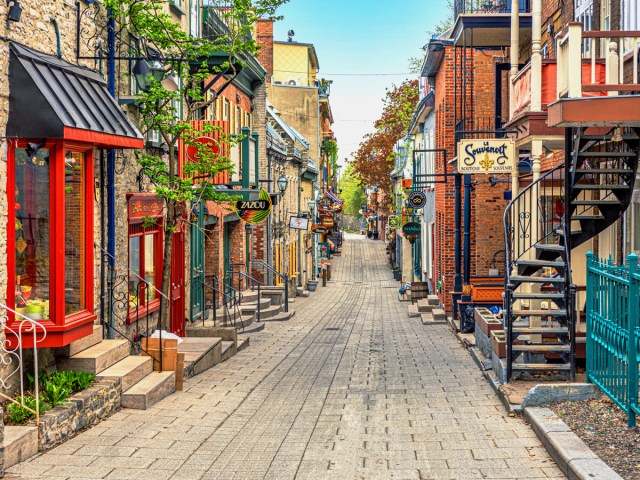
Québec City’s geography is a big part of its European essence. The riverside city is divided into two sections: Upper Town (Haute-Ville) and Lower Town (Basse-Ville), which together form the heart of Old Québec (Vieux-Québec). Upper Town is perched atop Cap Diamant, a promontory overlooking the St. Lawrence River that, in the colonial era, provided a strategic defensive advantage.
Today, the stone fortifications that still surround the Upper Town make it the only walled city in North America north of Mexico — a feature that helped earn its UNESCO World Heritage designation. Upper Town is also home to some of Québec City’s other key landmarks, including the aforementioned Plains of Abraham, the Citadelle, Dufferin Terrace, the Place d’Armes park and its popular public square, and the iconic Château Frontenac, a historic 1893 hotel whose spectacular medieval look defines the city’s skyline.
The Lower Town, right on the banks of the St. Lawrence, is a bustling spot full of old-world charm. The postcard-perfect Rue du Petit-Champlain and the Place Royale square are famous for their European village feel, with cobblestones underfoot and vibrant storefronts, restaurants, and stone architecture — like the 17th-century Notre-Dame-des-Victoires — at every turn.
The upper and lower parts of the city are connected by steep, winding streets and the famous Breakneck Steps (Escalier Casse-Cou). Or, for a more continental experience, try the funicular, one of only a few that operates in a historic city setting in North America.
French Traditions

True to its French settler origins, Québec City’s French culture remains strong today. The city predominantly speaks French but also embraces its English-speaking community and tourists. Still, it doesn’t hurt to learn a few French words or phrases before visiting, such as bonjour for “hello” and merci for “thank you.” Asking “Parlez-vous anglais?” (“Do you speak English?”) will do well in a pinch.
The city’s must-try dishes also highlight its traditions. Poutine, a beloved Quebecois classic made of fries piled with cheese curds and gravy, can be found just about anywhere. Locals will direct you to simple versions from any casse-croûtes (Québec’s version of a small snack bar or diner), but it’s best to sample as many versions from as many places as possible.
Maple syrup, another iconic product of the region, features prominently in many dishes and desserts in the city. At La Bûche, maple taffy is cooled on a snow bar, then twirled onto a stick for the next best thing to an authentic sugar shack experience.
Year-Round European Magic

Québec City’s European atmosphere extends through world-class festivals and celebrations throughout the year. In winter, the picturesque city turns into a snow-covered wonderland that wouldn’t be out of place in the Alps. The highlight of the season is the famous Winter Carnival, which debuted in 1894 and now draws some 500,000 visitors annually. The spectacle features snow baths, ice canoe races, live music, and more festivities, all while the city’s historic beauty twinkles with lights and ice sculptures.
In summer, the Plains of Abraham welcome over 1 million people for the Festival d’été de Québec music festival, while the city’s outdoor cafes conjure the streets of Paris. And each June, Saint-Jean-Baptiste Day celebrates the city and province’s rich Francophone heritage with parades, outdoor concerts, and lively block parties.
How To Visit Québec City
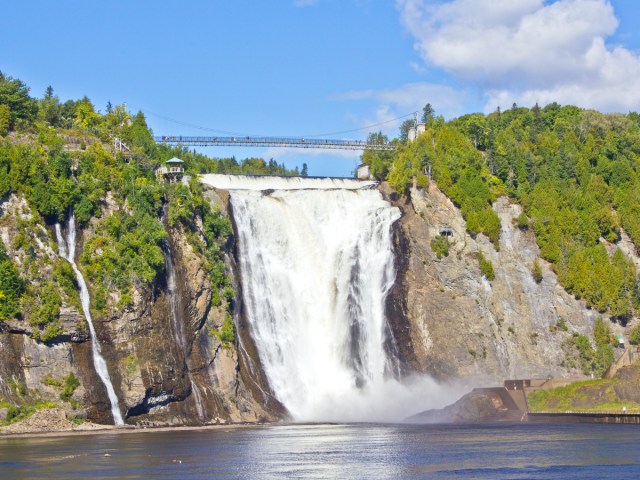
Québec City is easily accessible, with regular flights arriving and departing from Jean Lesage International Airport. The airport is only 10 miles from downtown Québec City, meaning a short rental car, cab, or bus ride. (The latter departs every 30 minutes and costs $3.75 CAD.) Trains also frequent Québec City through Canada’s Via Rail. Visitors from the U.S. can take Amtrak to Montreal, where transfers to Via Rail trains into Québec City are available.
Once in the city, the best way to explore is on foot — yes, even with all the hills — although if you’re traveling by car, the city offers handy driving and parking tips. For unique views of the city’s sights, consider a horse-drawn carriage ride or a guided river cruise, with unparalleled views of the Château Frontenac, the nearby Montmorency Falls, and Ile D’Orléans, a charming island village well worth its own excursion.
The climate in Québec City varies greatly depending on the season, so packing appropriately is key. In winter, prepare for snow and cold temperatures, while in summer, the weather is warm and perfect for outdoor exploration. Either way, bring something nice: Even if you’re not staying there, Château Frontenac’s elegant Bar 1608 will make you one of the best cocktails — and certainly provide one of the best views — in the city.
More from our network
Daily Passport is part of Inbox Studio, which publishes content that uplifts, informs, and inspires.












